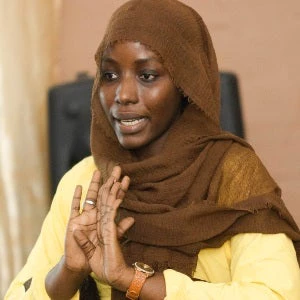 Open day with married adolescents to discuss pregnancy care and family planning in Kolda District, Senegal. Copyright: Alliance Nationale des Jeunes pour la Sante de la Reproduction.
Open day with married adolescents to discuss pregnancy care and family planning in Kolda District, Senegal. Copyright: Alliance Nationale des Jeunes pour la Sante de la Reproduction.
Globally, a woman dies every two minutes due to pregnancy or childbirth and a child or youth dies every 4.4 seconds. Most of these deaths occur in low- and middle-income countries with Sub-Saharan Africa bearing the brunt of this tragedy. Behind these statistics, are mothers, daughters, sisters, wives, friends that I have seen die. Tragically, many of these deaths are from conditions that are preventable.
Progress made in recent years is now being threatened, and our ability to achieve the Sustainable Development Goals in 2030 and universal health care are called into question. The current global context is concerning. While I try to be optimistic, I am wondering how Africa—expected to be home to 407 million women of reproductive age by 2030—will ensure equitable access to quality health services to these women, while addressing the multiple crises it is facing in health, economy, climate, nutrition, and intensified conflict. Resources are scarce and choices will have to be made, but not at the cost of millions of lives which can be saved if there is political will and the right investment.
Making health systems more equitable
While all eyes are on the multiple global crises facing the world, we must not forget the devastating impact the pandemic left on the health of women and girls across Africa, especially their sexual and reproductive health and rights (SRHR). We have all the evidence and know what it takes to achieve better health outcomes for women and girls: more investments in making health systems equitable and able to reach the most marginalized communities.
Adolescent girls’ health must remain a priority. The only way we can build efficient and sustainable health care systems for adolescents is through collective action and empowering young people to act. By working with partners, such as the Global Financing Facility (GFF) and the World Bank, we can place young people at the center of country efforts to build resilient health systems that can respond to adolescent needs.
Engaging youth to mobilize resources for women and girls’ health
In Senegal, my organization, Youth Alliance for Reproductive Health and Family Planning, was empowered to set up a community social accountability mechanism. This innovative digital tool allows youth, health workers and community members to work together to ensure quality health services, including SRHR, can reach those most in need.
Our most recent success was working with local authorities to help them understand youth and adolescent SRHR challenges and needs. Within a year, young people went from not being part of policy discussions to having two seats in the local health commission and influencing the local budget. As a result, the municipality of Sédhiou dedicated $6,500 to create safe spaces for adolescents and support community dialogue around early marriage. The funding will also be used to build water, sanitation and hygiene facilities in schools to enable adolescent girls to remain in school during their periods.
In addition, the municipality of Thietty has allocated $4,000 to adolescent health and $16,000 to secure ultrasound equipment and essential medicines that are expected to benefit more than 1,400 women of reproductive age.
While this might seem like a tiny amount, it can provide a lifeline for many adolescent girls in the community. It also attests to the importance of having youth voices heard in circles they would not otherwise be heard, giving them a chance to bring transformative change.
Unlocking additional investment
Our efforts have not gone unnoticed: our peer organizations in Madagascar, Uganda and other GFF partner countries are following suit. And we will not stop here. This is just the beginning of a longer-term effort to secure more commitments and unlock more financial resources for women and girls’ health.
The demographic dividend in our continent cannot be ignored, and our involvement and engagement are not only essential to influence policies, but critical to ensure sustainability of results. Now more than ever, our collective efforts, backed by more investments can help prioritize women and girls’ health and help accelerate gender equality. The challenges are immense and while the latest data are concerning, I see it as a wake-up call to hit the gas on investment while engaging communities and young people in the process.
I’ll say it again: by 2030, Africa will be home to 407 million women of reproductive age. We have an opportunity not only to save their lives but also to empower them to become productive members of society – by getting an education and choosing when to have a family – and help solve many of the crises affecting the world. I will definitely be one of them.


Join the Conversation